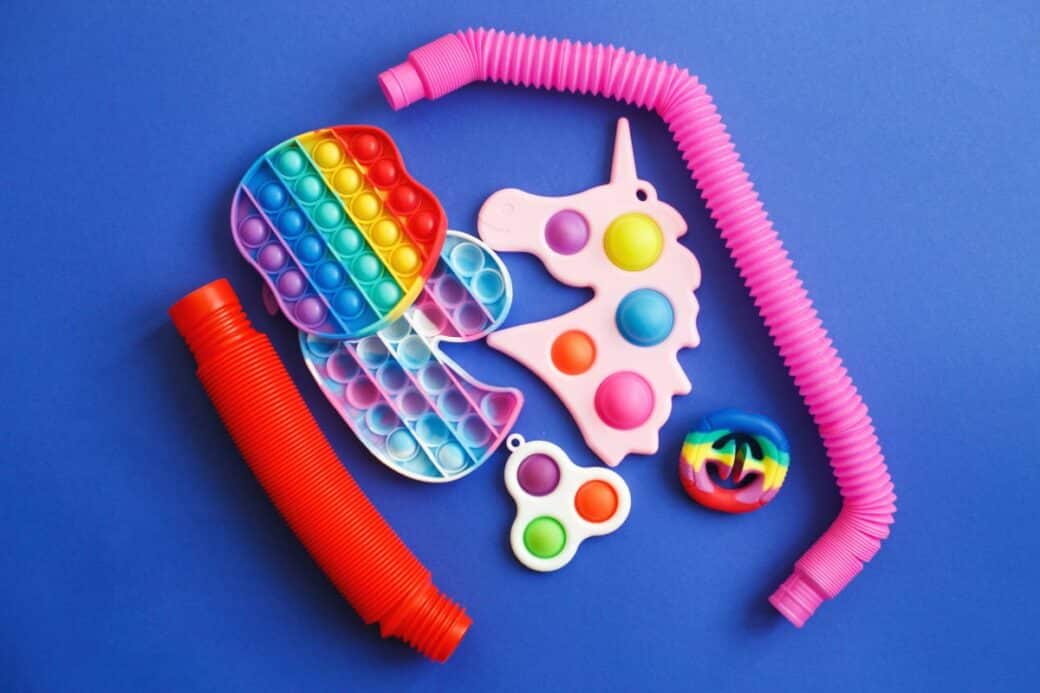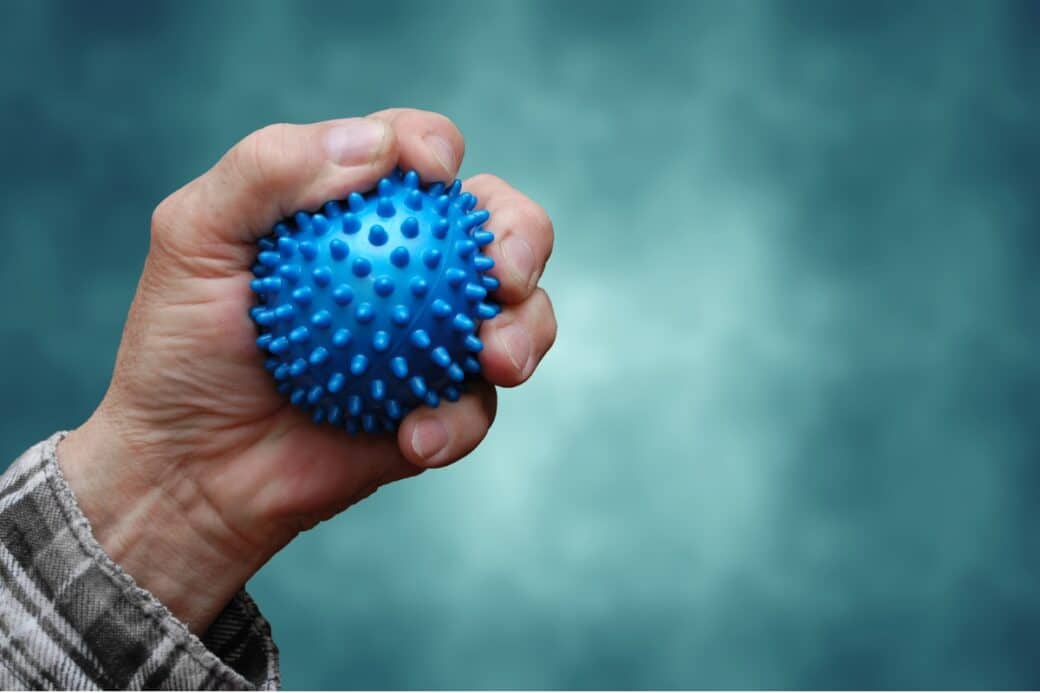Are you feeling overwhelmed or tense lately? If so, you’ll be glad to know that there are alternatives to the traditional stress ball that can help alleviate your stress. In this article, we will explore a variety of options that go beyond the ordinary stress ball, providing you with new and creative ways to find relief. Whether it’s a fidget toy, a soothing candle, or even a mini Zen garden, we’ve got you covered. So sit back, relax, and get ready to discover stress relief in a whole new way.

Stress Balls Alternatives: Understanding Stress and its Impact
Stress is a natural response that our bodies and minds experience when we face challenges or demands. It can be caused by various situations, such as work pressure, financial difficulties, relationship problems, or even just the hectic pace of everyday life. While a certain level of stress can actually be beneficial as it motivates us to take action, prolonged exposure to high levels of stress can have negative effects on both our physical and mental well-being.
The Science Behind Stress
When we encounter a stressful situation, our body releases stress hormones, such as cortisol and adrenaline. These hormones trigger the “fight or flight” response, preparing our body to either confront the stressor or escape from it. This response causes physical changes, such as increased heart rate, faster breathing, and tense muscles.
Physical and Mental Effects of Stress
Experiencing stress for a prolonged time can have a detrimental impact on our health. Stress can lead to physical symptoms like headaches, digestive issues, muscle aches, and lowered immune system function. Mentally, stress can cause anxiety, irritability, difficulty concentrating, and even depression. It can also disrupt our sleep patterns, leading to fatigue and decreased productivity.
Need for Stress Relief Techniques
Given the negative effects that stress can have on our well-being, it is crucial to find effective ways to manage and relieve stress. By incorporating stress relief techniques into our daily routine, we can reduce the impact of stress on our physical and mental health, and ultimately improve our overall quality of life.
Why Opt for Alternatives to Stress Balls
While stress balls have long been a popular tool for stress relief, they may not be suitable for everyone. It is important to consider their shortcomings and explore alternative stress relief techniques to find the best fit for your needs.

Shortcomings of Stress Balls
One of the main drawbacks of stress balls is their limited range of motion. They primarily provide a squeezing action, which may not fully address the diverse physical and mental symptoms of stress. Additionally, some people may find that stress balls do not offer enough stimulation or engagement to effectively reduce their stress levels.
Diversifying Stress Relief Techniques
To effectively manage stress, it is beneficial to diversify your stress relief techniques and explore different options. By incorporating alternative techniques into your routine, you can target different aspects of stress and find what works best for you. It’s important to remember that what works for one person may not work for another, so it is worth exploring different alternatives to find the one that resonates with you the most.
Fidget Spinners as Alternatives
One alternative to stress balls that have gained popularity in recent years is the fidget spinner. These small handheld devices consist of a central bearing and several weighted arms that spin when flicked. While originally designed for individuals with ADHD or autism to help improve focus and reduce restlessness, fidget spinners can also be used as a stress relief tool.
Understanding Fidget Spinners
Fidget spinners provide a tactile and visual distraction that can help redirect your focus and release stress. The spinning motion can be soothing and calming, providing a form of sensory stimulation that can help alleviate anxiety and promote relaxation. Fidget spinners come in various designs and materials, allowing for personalization and customization.
Benefits of Using Fidget Spinners for Stress Management
Using fidget spinners as a stress relief tool offers several benefits. They act as a non-intrusive and portable solution, as they can easily be carried in your pocket or bag. Fidget spinners can help redirect nervous energy and provide a temporary escape from stressful thoughts or situations. They can promote a sense of calmness and provide a healthy outlet for stress, without disrupting your daily activities.
Use of Stress Relief Gadgets
In addition to fidget spinners, there are various stress-relief gadgets available on the market. These gadgets aim to provide a quick and convenient way to manage stress, offering different features and functionalities to cater to individual preferences.
Electronic Stress Relief Gadgets
Electronic stress relief gadgets utilize technology to provide relaxation and stress reduction. These can include devices that emit soothing sounds, such as nature sounds or white noise, to help create a calming environment. Other electronic gadgets may offer features like guided meditation, light therapy, or even virtual reality experiences to immerse yourself in a stress-free environment.
Non-electronic Stress Relief Gadgets
Non-electronic stress relief gadgets encompass a wide range of options. These can include handheld massagers, acupressure mats, stress balls with different textures, fidget cubes, and more. These gadgets offer different tactile sensations and can be used to relieve muscle tension, stimulate acupressure points, or provide sensory stimulation to divert attention from stress.
Pros and Cons of Stress Relief Gadgets
The use of stress relief gadgets can be effective in providing immediate relief from stress and promoting relaxation. They offer convenience and can be easily integrated into your daily routine. However, it is important to note that relying solely on gadgets for stress relief may not address the root causes of stress. It is essential to combine their use with other stress management techniques for a holistic approach to stress reduction.
Exploring Meditation for Stress Relief
Meditation is a practice that has been used for centuries to promote relaxation and reduce stress. It involves focusing your attention and eliminating the stream of thoughts that may be causing stress. Meditation can be done in various forms, each offering its own unique benefits for stress relief.
Practicing Mindfulness
Mindfulness meditation involves being fully present in the moment and observing your thoughts and sensations without judgment. It encourages acceptance and non-reactivity, allowing you to detach from stressful thoughts and bring your attention back to the present moment. Mindfulness meditation can help reduce anxiety, improve concentration, and promote overall well-being.
Deep Breathing Exercises
Deep breathing exercises are a simple yet effective technique to release stress. By taking slow, deep breaths and focusing on your breath, you activate the body’s relaxation response. This calms the nervous system, lowers blood pressure, and reduces muscle tension. Deep breathing exercises can be done anywhere, at any time, making them a convenient tool for stress relief.
App-Guided Meditation
For those who are new to meditation or prefer guidance, there are numerous smartphone apps available that offer guided meditation sessions. These apps provide a variety of meditation styles, durations, and themes to cater to different needs and preferences. They can be a helpful tool for establishing a regular meditation practice and incorporating mindfulness into your daily life.
Physical Exercise to Alleviate Stress
Physical exercise is not only beneficial for your physical health but also plays a crucial role in stress management and overall well-being. Engaging in regular exercise helps reduce stress hormones, increase endorphin production, improve sleep quality, and boost your mood.
Benefits of Physical Exercise
Physical exercise offers a wide range of benefits when it comes to stress relief. It helps release pent-up energy and tension, promoting a sense of relaxation and mental clarity. Regular exercise can also improve your self-confidence and self-esteem, reduce symptoms of anxiety and depression, and increase your overall resilience to stress.
Suggested Exercises for Stress Reduction
The type of exercise you choose depends on your preferences and physical capabilities. Some popular stress-relieving exercises include aerobic activities like running, swimming, or cycling, which help increase endorphin release. Yoga and Pilates can improve flexibility, balance, and posture while also incorporating mindfulness and deep breathing techniques. Other options include dancing, hiking, team sports, or even just going for a leisurely walk in nature. Find what activity brings you joy and make it a regular part of your stress management routine.
Employing Stress Relief Apps
In today’s digital age, technology can also be harnessed for stress relief. Stress relief apps provide convenient and accessible tools to manage stress anytime, anywhere.
Prominent Stress Relief Apps
There are several stress relief apps available that offer a variety of features to help you manage stress. Some popular ones include meditation apps like Headspace and Calm, which provide guided meditation sessions and soothing ambient sounds. Other apps, such as Pacifica and Sanvello, offer tools for tracking mood, guided breathing exercises, and journaling prompts to support stress management.
How Can They Help?
Stress relief apps can help you develop healthy habits and regularize stress management techniques. They can provide structure and guidance, ensuring that you dedicate time to stress-relief activities. These apps often offer reminders and progress-tracking features, encouraging you to stay consistent. Additionally, the resources provided by these apps can be accessed whenever you need them, giving you instant support in times of stress.
Music as a Stress Relief Tool
Music has been used for centuries as a powerful tool for relaxation and emotional expression. Listening to music can have a profound impact on our mood, helping to reduce stress and promote a sense of calmness.
How Music Affects Mood
Music can evoke emotions and create a shift in our mental state. Upbeat and energetic music can boost our mood and energy levels, while soft and soothing melodies can induce relaxation and tranquility. The rhythmic patterns and melodies can distract our mind from stressful thoughts, allowing us to unwind and experience a moment of peace.
Recommendations for Stress-Relief Music
When it comes to selecting stress-relief music, personal preference is key. Classical music, nature sounds, instrumental tunes, and ambient music are often recommended for their calming qualities. Experiment with different genres and artists to find the music that resonates with you and creates a serene environment for stress relief. Creating a playlist of your favorite soothing tracks can be a valuable resource to turn to whenever you need a moment of relaxation.
Journaling for Stress Management
Journaling is a simple yet effective method for stress management that can help you gain clarity, process emotions, and reduce anxiety. Putting your thoughts and feelings onto paper can provide a sense of release and create a space for self-reflection.
Benefits of Journaling
Journaling offers numerous benefits for stress relief. It allows you to express and acknowledge your emotions, providing a safe outlet for thoughts that may be causing stress. Writing down your concerns can help clarify your thoughts and bring a sense of perspective to difficult situations. Journaling can also serve as a record of your progress and personal growth, instilling a sense of gratitude and reminding you of the positive aspects of your life.
Tips for Effective Stress Relief Journaling
To make the most out of stress relief journaling, consider the following tips:
- Set aside dedicated time for journaling, preferably in a quiet and comfortable environment.
- Write freely and without judgment. Allow your thoughts to flow naturally.
- Focus on your emotions and how certain situations make you feel. Explore any patterns or triggers.
- Use the journal as a space for self-reflection and problem-solving. Brainstorm potential solutions or strategies.
- Incorporate gratitude into your journaling practice by noting down things you are grateful for.
- Customize your journaling routine to fit your preferences. Some may find it helpful to write daily, while others may prefer a more sporadic approach.
Art and Craft Activities for Stress
Engaging in arts and crafts activities can be a therapeutic way to manage stress. The act of creating can provide a sense of tranquility, mindfulness, and accomplishment.
Therapeutic Benefits of Creativity
Art and craft activities offer a multitude of therapeutic benefits for stress relief. They allow for self-expression and emotional release, providing a non-verbal outlet for processing emotions. The process of creating can be meditative, allowing your mind to focus on the present moment and divert attention from stressors. Engaging in artistic endeavors can also boost self-confidence and serve as a reminder of your creative potential.
Suggestions for Stress-Relief through Art Activities
There are numerous arts and crafts activities that you can explore for stress relief. Some popular options include painting, drawing, coloring, knitting, crocheting, sculpting, and collage-making. These activities can be done individually or in groups, depending on your preference. Experiment with different mediums and techniques to find what resonates with you the most. Remember, the goal is not to create a masterpiece but to enjoy the process of creating and find solace in the act of making.




